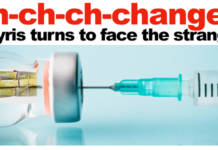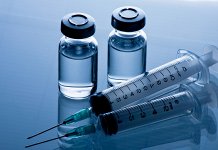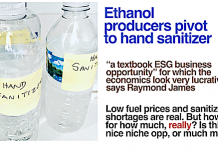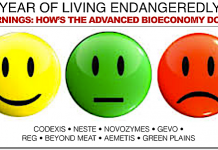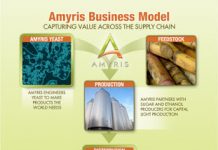Jim Lane
Raises $80M at $10 per share; becomes first new industrial biotech company to complete IPO in more than a year.
What went right and how? Is the IPO window re-opening?
In Minnesota, BioAmber announced the pricing of its initial public offering of 8 million units consisting of one share of common stock and one warrant to purchase half of one share of common stock at $10 per unit, before underwriting discounts and commissions. All units are being sold.
BioAmber has granted the underwriters an option for 30 days to purchase up to an additional 1.2 million units at the initial public offering price to cover over-allotments.
The units are expected to start trading on the New York Stock Exchange today under the symbol “BIOA-U”. BioAmber also intends to list its common stock on the Professional Segment of the regulated market of NYSE Euronext in Paris under the symbol “BIOA.”
Credit Suisse, Barclays and Société Générale acted as joint book-running managers for the offering. Pacific Crest Securities was co-manager for the offering.
What went right: the structure
First and foremost, there’s the modesty factor.
The IPO is a relatively small one, raising $80M, compared to the nearly $200M hauled in by the likes of Solazyme and Gevo at the height of the IPO boomlet in 2011. Codexis had a similar result, in terms of overall cash raised, when it became the first company in this wave of next-gen technologies to complete an IPO in 2010. The overall company begins trading today with an $180 million market value well below the billion dollar valuations that Solazyme and KiOR commanded at the time of their IPOs.
In terms of the structure of the offering the late addition of warrant sweeteners could well have made the difference providing that upside “kicker” for the investor that balanced more effectively against the perceived risk of an early-stage company.
In terms of market structure we see that qualifying BioAmber as an “emerging growth company” under the terms of 2012′s JOBS Act ensured that the offering hasd more regulatory latitude – particularly in permitting more interaction between investors and BioAmber and its investment banking team between the original S-1 and the actual IPO.
We covered the impact of warrants and the JOBS Act this week in BioInvest Digest.
What went right: the company
Revenue-producing. In general terms, BioAmber came later to the market than some of its peers although still a development-stage company that lost $39 million in 2012 and $30M in 2011, the company has been ramping up revenue and recorded $2.2 million in product sales for 2012, with a 24% margin. In all there were 227 tons of biosuccinic acid sold to 19 different customers and BioAmber is the first to achieve biosuccinic sales on this scale.
Reduced scale-up risk. Though the IPO proceeds will, in part, be dedicated to the first commercial plant, BioAmber has been running at its demo plant for three years now in Pomacle, France at the 350,000 liter scale far more progress towards scale-up than some of its peers.
Improvements in the first commercial design to increase margin. As BioAmber related in the S-1A, “We have incorporated numerous lessons learned and improvements gained from operating the facility in France into our engineering design for our planned manufacturing facility in Sarnia, Ontario. We expect to produce bio-succinic acid [without subsidy] cost-competitive with succinic acid produced from oil priced as low as $35 per barrel.”
Lower feedstock risk exposure. As BioAmber detailed in its last revised S-1A registration statement, “Our process requires less sugar than most other renewable products because 25% of the carbon in our bio-succinic acid originates from carbon dioxide as opposed to sugar. This makes our process less vulnerable to sugar price increases relative to other bio-based processes.”
Less policy risk. An advantage that the pure-play renewable chemical companies have over their fuel-only or “fuels and chems” peers? There was never any expectation of market subsidies or mandated usage and the pure-plays have inherently less policy risk a risk realm that has proven highly toxic to both public investors and project finance suppliers.
Biggest risk left?
The market for succinic acid itself is relatively small. The key to BioAmber (and other developers, like Myriant) is finding a market for biosuccinic as a “drop-in” replacement for other, incumbent petroleum-based chemicals, addressing what BioAmber termed “a more than $30 billion market opportunity.” That claim is yet to be proved and the hard yards of commercialization lay ahead for the company to develop novel markets at scale.
But that, in many ways, is the market position of Solazyme and we have seen the public markets more embracing of the risk of new markets. It has been fear of technology risk, feedstock risk, finance risk and policy risk that has been more notable in the drubbing handed out to several IPOs that happened earlier in the cycle.
Bottom line – is the IPO window re-opening?
Yep, it’s open again, but narrowly.
Lessons learned? Avoid as much technology risk (and the accompanying delays) as possible. Have a clear path for raising debt fear of dilution is a share price-killer too. Manage that input cost exposure.
Jim Lane is editor and publisher of Biofuels Digest where this article was originally published. Biofuels Digest is the most widely read Biofuels daily read by 14,000+ organizations. Subscribe here.

